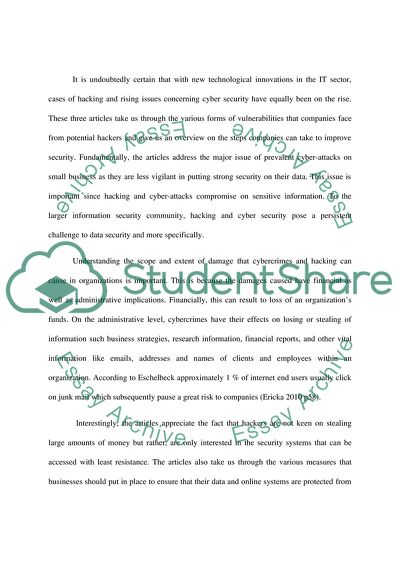Cite this document
(How Hacking and Cyber-Attacks Compromise on Sensitive Information Annotated Bibliography Example | Topics and Well Written Essays - 2500 words, n.d.)
How Hacking and Cyber-Attacks Compromise on Sensitive Information Annotated Bibliography Example | Topics and Well Written Essays - 2500 words. https://studentshare.org/information-technology/1820346-critical-review-on-3-journal-papers
How Hacking and Cyber-Attacks Compromise on Sensitive Information Annotated Bibliography Example | Topics and Well Written Essays - 2500 words. https://studentshare.org/information-technology/1820346-critical-review-on-3-journal-papers
(How Hacking and Cyber-Attacks Compromise on Sensitive Information Annotated Bibliography Example | Topics and Well Written Essays - 2500 Words)
How Hacking and Cyber-Attacks Compromise on Sensitive Information Annotated Bibliography Example | Topics and Well Written Essays - 2500 Words. https://studentshare.org/information-technology/1820346-critical-review-on-3-journal-papers.
How Hacking and Cyber-Attacks Compromise on Sensitive Information Annotated Bibliography Example | Topics and Well Written Essays - 2500 Words. https://studentshare.org/information-technology/1820346-critical-review-on-3-journal-papers.
“How Hacking and Cyber-Attacks Compromise on Sensitive Information Annotated Bibliography Example | Topics and Well Written Essays - 2500 Words”. https://studentshare.org/information-technology/1820346-critical-review-on-3-journal-papers.


